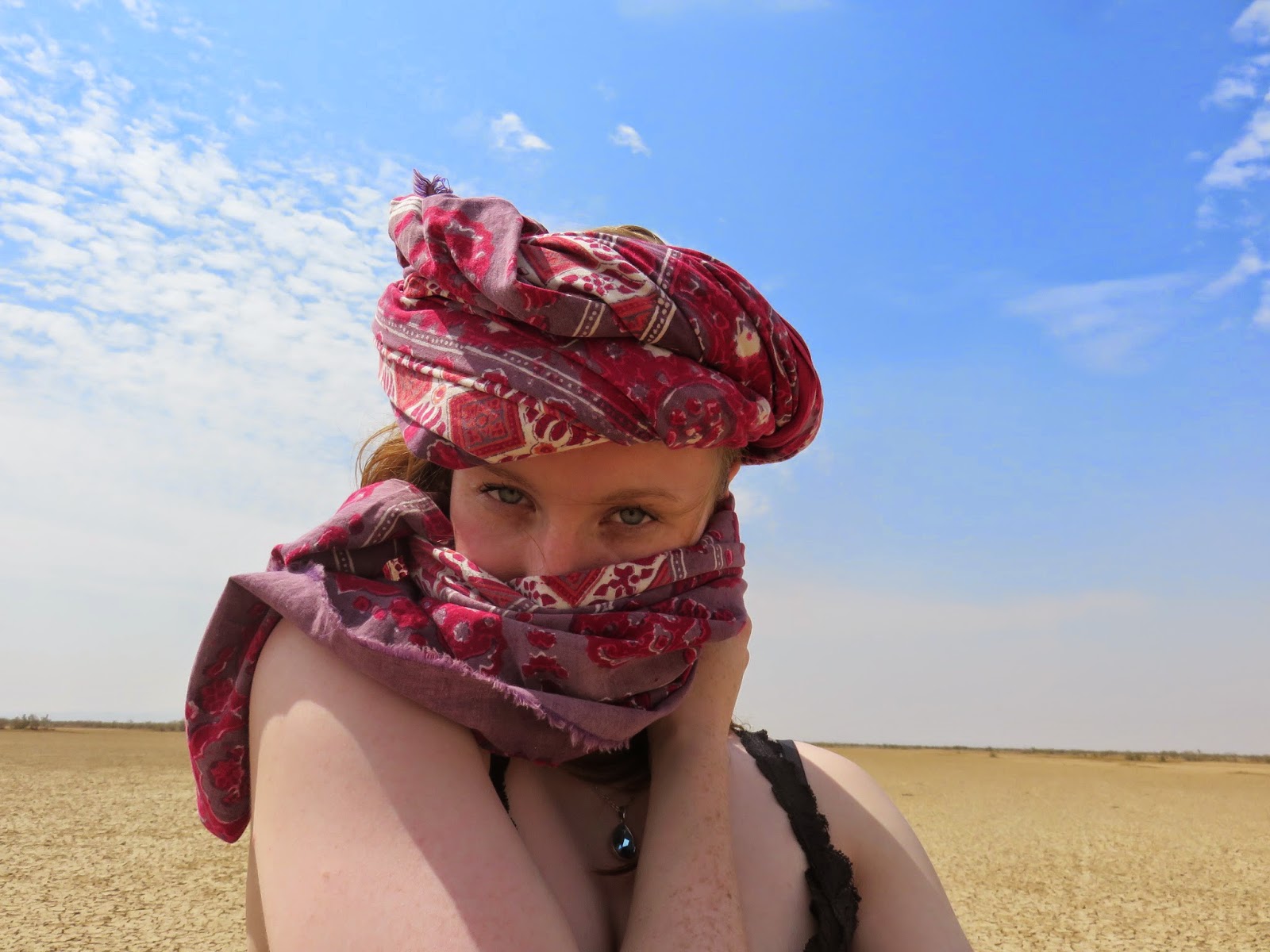I must say, my trip this weekend to Bhuj was absolutely incredible;
my best in India so far, and something utterly unforgettable. I should first
explain that Bhuj is a relatively small town in Gujarat, situated beside the
incredible salt desert of Kutch, while Mandvi is a coastal town a few hours
from Bhuj with a massive ship building industry.
Saturday
Three of us foreigners took another sleeper bus on Friday evening,
arriving at ‘City Guest House’ in Bhuj by 5am Saturday morning. We filled out
the necessary paperwork and were shown to our room (nothing to write home
about, but nice and cheap enough despite a lack of hot water) for a quick nap
before breakfast (“butter toast jam?”). It was at the breakfast table at 9:30am
that we first met our wonderful, knowledgeable and beautiful tour guide for the
day: Kuldip, and our unbelievable adventure began.
Kuldip’s tiny black car (white by the end of the day) awaited
us for the 280km round trip into Kutch, the desert and surrounding villages. This
was where we started, inching into the desert land with stop overs in some
local craft villages where we had demonstrations in pattered kitchen equipment
and Rogan art; an ancient freehand, symmetrical art onto fabric using castor
oil, now only created in Kutch. The skill these people possess is amazing.
We played crazy card and number games, ‘rocked out’ to the
cheesy selection of music (everything from ABBA to Bony M, Bob Marley to Leona
Lewis and of course some more traditional Indian songs), and with Kuldip’s
sense of humour and unending energy, we had an amazing time just driving the
straight Route 66-esk roads through a deserted but stunning land. We had chai
stops, and at one point dared each other to stick our heads out of the windows
of the moving car, for no other reason than “well, it’s what you do on a road
trip right?”
One of the most enjoyable stops was when we went off-roading
into the desert itself, kicking up dust and spinning the car faster and faster.
We pulled over when we could no longer see anything in any direction and had
some time playing sheep herder and angry desert man before spotting a wild
boar running. We decided to have a little ‘safari’ and chase after it. The
experience was made all the more special as the four of us stood toe to toe in
the cracked, dried sand, and had a moment of silence for the world in a place
where it felt the world no longer existed.
We were lucky enough to visit a tiny hamlet, miles into
nowhere, where we experienced a glimpse of the reality of desert living. The people
receive no education, not in a traditional sense anyway, they live in single
roomed huts that need rebuilt or fixed after every monsoon season, and their
only sources of income are the quilts the women make and embroider, and when a
single man takes a month to travel to catch and sell fish in a town some
hundred kilometres away. It was very humbling to learn of their lives which are
undeniably difficult and a daily challenge, but to see them so joyous. Not a
single child had a frown, and all were excited and desperate to make friends
(this resulted in a competition of who can hold the poor lamb in as strange a
way as possible). It puts life into perspective seeing how easy it can be to be
truly happy.
The salt desert itself is the largest in the world and was
mind boggling. ‘The Great Rann of Kutch’ fills with water every year during monsoon
before draining again in winter, leaving behind a pure white land covered in salt.
It was here that we watched the sunset which turned the white into pink, tried
for another photo shoot, this time Kuldip making turbans from our scarves and
played a little Marco-Polo.
The long drive home to the guest house was broken by a break
in the desert again, the same place we spotted the boar. I have never felt as
at peace as I did lying under the stars, hearing nothing but the natural silence
of the land. We broke the moment only for storytelling and a little
out-of-control rendition of ‘Stand by Me’.
It was a perfect day, made possible by our tour guide. The job
title does nothing to show his commitment to the people and land, nor his
passion, and I can guarantee the only way to see a desert and experience some
of the world’s wonders is with Kuldip in Kutch.
Sunday
Our second and last day was spent half in Bhuj, wondering
the Hilltop Garden, and half in Mandvi at the public beach. Here we met up with
Kuldip again, and his Scottish friend Victor (whom I’m to meet for a curry with
in Glasgow). We travelled by Government bus (to Europeans – normal bus) which
was quite enjoyable after learning it looks worse from the outside, and hitched
a lift back with Kuldip and Victor for our return sleeper bus. We had a
fabulous time lounging on the overcrowded beach – remarkably similar to an English
coast, except only in India does one face the problem of choosing 'camel or chai?' We enjoyed finding new ways
to tell the locals ‘no’ to photographs, I think I’d do my nanny proud with my
sass, and it was fun to teach the girls ‘I Spy’. Victor was loud and funny,
outgoing and not afraid to give some Sottish
charm to the Indians.
After dropping him off, the ever amazing Kuldip arranged
dinner for us in our last hour. Despite jokes of kidnapping us, we had a lovely
time at his friend’s farm where we ate some home cooking by the moonlight before
saying goodbye. It was heart breaking to leave!
























































